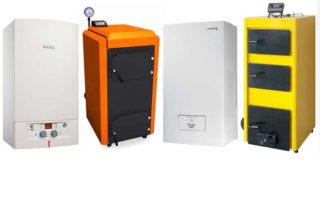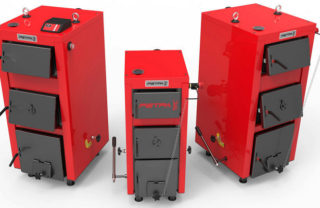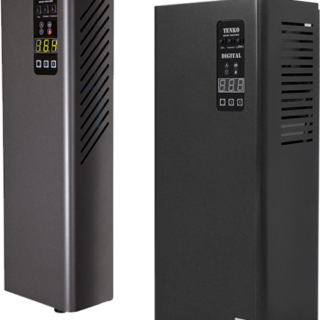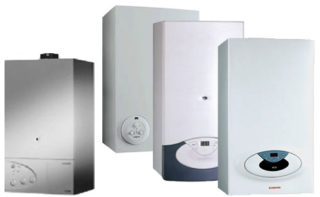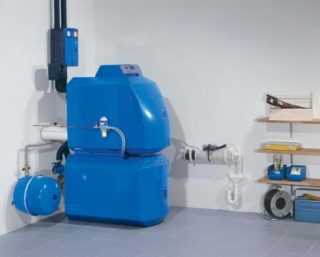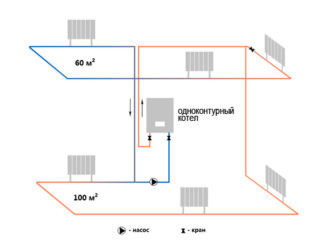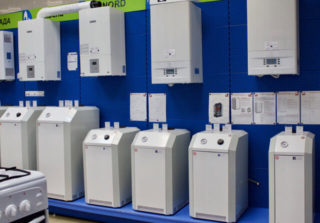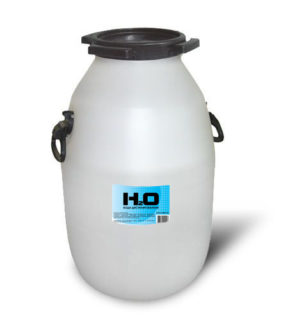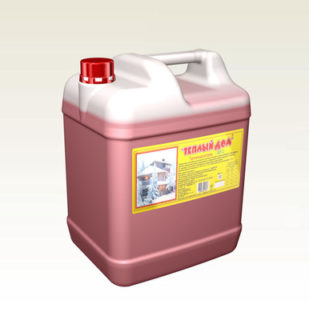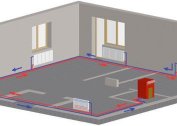The boiler is the main element of the heating system of a private or apartment building. In order for the room to have a comfortable temperature even in severe frosts, it is necessary to choose the right equipment. Thermal equipment manufacturers offer a huge range of products. In order to prevent mistakes, it is worth exploring the main points of the classification of boilers and the criteria for their selection.
Types of boilers by fuel type
The purpose of the heating equipment is to heat the coolant to provide space heating. Types of boilers - this is the separation of units by design features. Their main classification is by type of fuel. When buying, it is advisable to focus on affordable and affordable energy.
Solid fuel
Aggregates for the production of thermal energy require solid fuel. This option is used in private homes where gas pipelines are not available. Manufacturers offer the following types of boilers:
- Classic - any type of solid fuel is burned in the furnace to heat the coolant.
- Pyrolysis - the design involves two combustion chambers. In the first, fuel is burned, in the second, gases are released. The equipment is more productive, but expensive.
The boilers operate on wood, coal, peat or pellets, which are pressed wood waste.
Pros:
- fuel availability;
- non-volatility;
- environmental Safety;
- durability of operation.
Minuses:
- frequent laying of firewood or coal is required;
- low efficiency;
- inertia;
- ash pan cleaning required.
There are models of boilers for long burning. They require minimal human involvement. Fueling occurs once every 12 hours. The operation of the equipment is controlled by automation.
Electric
Boilers operating from the electric network are distinguished by a high level of automation and versatility of use. They can be installed in the apartment, cottage, in the country.
Types of electric boilers:
- Heating elements - a tube with a spiral heated by electric current serves as a heating element. In the case, several heating elements can be installed to adjust the power of the unit.
- Electrode - the heat carrier is heated due to its own resistance to electric current. The device case has a compact size. The unit is productive, has a high efficiency.
- Induction - a type of electric boiler where there are no heating elements. It operates on the principle of electromagnetic induction. The equipment is safe and reliable. The downside is the large size and cost.
Among the three types of electric boilers, the most popular are the heating elements and electrode models.
Pros:
- minimum maintenance;
- affordable cost;
- wide range of sizes and power;
- operational safety.
Minuses:
- dependence on the power grid;
- high cost of energy.
Electric boilers are often installed as optional equipment. They are included at night when electricity rates are reduced.
Gas
The popularity of gas heating equipment is explained by the cheapness of fuel, which gives a minimum of waste. The equipment is reliable and easy to maintain.On sale there are various types of gas boilers, differing in capacity and design features. The performance of wall units is on average 14-30 kW, floor - 20-60 kW.
There are two types of gas boilers:
- Convection - a traditional design of a unit that works on the energy of the combusted gas.
- Condensing - the equipment additionally uses the residual heat of the flue gases. Energy is obtained by condensation of steam on the walls of the second heat exchanger. The efficiency of such a system is more than 100%.
The main separation of the types of gas boilers occurs according to the installation method:
- Wall-mounted - the compact equipment case allows you to place the unit in any room. It is often chosen for apartments with individual heating.
- Floor - bulky structures according to the rules are installed in a separate room. Their heat exchangers are made of cast iron. Powerful appliances can heat large areas of a house.
Units with an open combustion chamber require the installation of a traditional chimney. Models with a closed chamber have a fan, so the output of combustion products is carried out through a coaxial chimney. Wall-mounted heat exchangers are bithermic and separate. The material for them is copper and steel. Most products are manufactured in a double-circuit version.
The advantages of the equipment are:
- the ability to work on the main and balloon gas;
- automation;
- silent work;
- high efficiency.
The disadvantages of gas boilers include the need to obtain permission from the gas company to install equipment.
Liquid fuel
Liquid fuel boilers most often operate on a diesel engine (diesel fuel). This is not the only oil product suitable for burning by a burner. There are models for oil testing, gasoline, fuel oil. Changing the burner, you can go to any of the listed petroleum products.
Pluses of units:
- Efficiency is 85-90%;
- simple operation;
- no permission required;
- work with any heat carrier.
Minuses:
- expenses for heating system equipment;
- high fuel consumption;
- noisy work.
To place liquid-fuel equipment, a boiler room is required - a separate room with good ventilation. It is important to find a safe place to store flammable materials. In private homes, diesel boilers are not common. They are recommended for industrial facilities.
Types of boilers by the number of circuits
The number of heating circuits determines the purpose of the equipment.
Single-circuit
The design of the boiler involves only heating the coolant circulating in the system. If necessary, a boiler is installed in which water is heated. Single-circuit models are usually available with outdoor placement.
Double-circuit
This type of heating boiler, unlike the previous one, allows you to simultaneously heat the coolant and water for domestic needs. Inside the housing there are two independent circuits - one for a closed heating system, the second for domestic hot water.
Classification of equipment by installation method
Heating boilers are produced in two installation options: wall (mounted) and floor. The first type has a small capacity, but it is compact in size. The second type of equipment is characterized by high performance and considerable weight. For some models, it is necessary to mount an additional foundation.
Wall mounted
Wall-mounted models are compact in size and attractive in design. They are installed in the kitchen or hallway of a private house, in apartments separated from central heating.The low power of the units allows you to heat rooms with an area of 50-400 m2.
Floor
The equipment for floor placement is equipped with cast-iron or steel heat exchangers. It is heavy and bulky, but has a long life. Floor-standing types of heating boilers include solid fuel and diesel models. Gas and electric units with floor mounting are also available.
Types of units by electrical dependence: electrical independent - boilers with piezoelectric elements or other devices for ignition; electrically dependent with autostart - the unit starts troubleshooting after troubleshooting or restoring power; electrically dependent without autostart - the boiler power is turned on manually.
Types of coolants
For efficient heating, a correctly selected coolant must circulate in the system. The liquid must have good heat capacity and heat transfer, as well as chemical inertness. The systems use two types of coolant:
Water
The easiest, cheapest and most affordable way to distribute heat through pipes and radiators is to use water. The fluid is safe in case of leakage. Distilled water does not scale on the heating elements and sediment in the tubes. With many positive qualities, she has disadvantages:
- freezes at temperatures below 0 ° C, can break the pipeline;
- causes metal corrosion;
- preparation is required to exclude salts.
The use of water is recommended for homes with permanent residence. In other cases, it is better to abandon it in favor of non-freezing compounds.
Mixture with antifreeze
Various non-freezing liquids are denoted by the common name - antifreeze. Most often, ethylene glycol is used as a coolant. The composition prevents corrosion, scale and freezing of pipes. Its significant disadvantage is toxicity. Safe antifreeze propylene glycol has all the positive characteristics, but is less popular due to the high price.
Varieties of boilers by type of traction: natural traction - is created without installing special devices, the advantage is independence from electricity; forced draft with air supply - removal of combustion products and air intake into the combustion chamber is carried out using fans; forced draft without air supply - special equipment removes residues from burning gas through the chimney.
Criteria for choosing heating equipment
When choosing a boiler, the main factor is the available type of fuel. The most economical option is gas equipment, the operation of an electric boiler will cost the most. The main selection criteria:
- Power - the area of the room, the climatic conditions of the region, the quality of the building's insulation are taken into account. The approximate formula for calculating power is 100 W per 1 m2.
- The number of circuits - a single-circuit model is enough for heating, but the dual-circuit version with hot water is more functional.
- The cost of heating equipment, its installation and connection to the system.
- Degree of automation - boilers with a control unit are easy to operate. They do not need constant monitoring by the person.
The service life of the boilers depends on the quality of manufacture. It is worth choosing products from well-known and respected brands. It will not be amiss to find out about the availability of a service center in the city.
